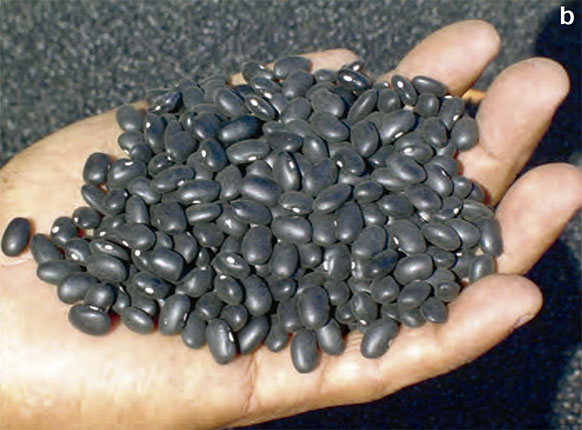Production of local bean seed under artisanal system
Abstract
In Venezuela, the production of edible legume seed under the artisanal system allows the participation of small farmers in national agricultural programs, by producing this important input for family use and communities in rural areas and sometimes difficult to access. The short cycle of the bean (70-90 days) and its adaptation to our tropical conditions, make the production of seeds of autochthonous cultivars under artisanal system attractive.
This activity has been carried out for many years in the states of Lara, Yaracuy, Barinas, Portuguesa, Monagas, Sucre, Apure and Aragua, managed by farmers with small areas ranging from 1 to 4 hectares, they produce in the rainy season, They use manual labor with few or no agricultural inputs, the harvest is manual and the production is destined for self-consumption and exchange of the surplus (Pérez, 2013).
This seed production system has been improving little by little in yield and quality, small farmers organized by the INIA, are being accompanied directly in their production areas, providing cultivars and local technologies, from planting to the conservation of their crops. seeds and generating the security of this input in quantity and quality for its next sowing, in order to promote the national supply, sustainability and food security.
References
Instituto Nacional de Investigaciones Agrícolas (INIA) Servicio Nacional de Semilla (SENASEM). 2015. Comunicación directa. Registro Nacional de Cultivares Comerciales de Caraota (Phaseolus vulgaris). Maracay, Venezuela.
Instituto Nacional de Investigaciones Agrícolas (INIA) Servicio Nacional de Semilla (SENASEM). 2009. Protocolo para la evaluación cultivares de caraota con fines de elegibilidad a certificación. Maracay, Venezuela.
FAO, Organización de las Naciones Unidas para la Agricultura y la Alimentación e IFA Asociación Internacional de la Industria de los Fertilizantes. 2002. Los fertilizantes y su uso. ftp://ftp.fao.org/agl/agll/ docs/fertuso.pdf
Pérez, D., N. Camacaro, M. Morros y A. Higuera. 2013. Leguminosas de grano comestible en Venezuela. MPPCTI – ONCTI. 160 p.
Torrealba, G., 2017. INIA Yaracuy. Comunicación personal. Fertilización en caraota. Venezuela.


